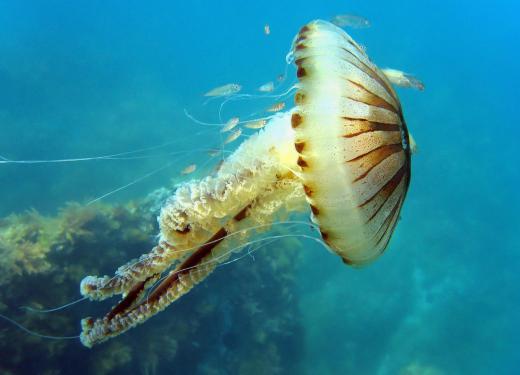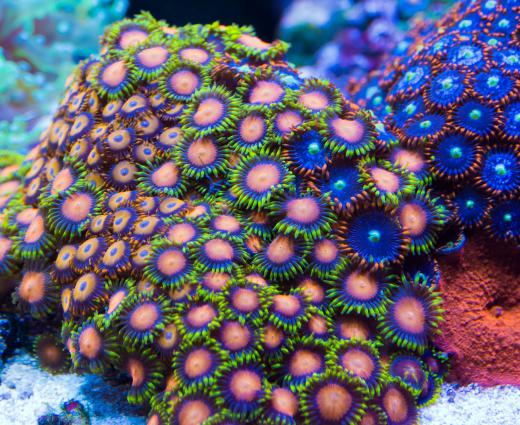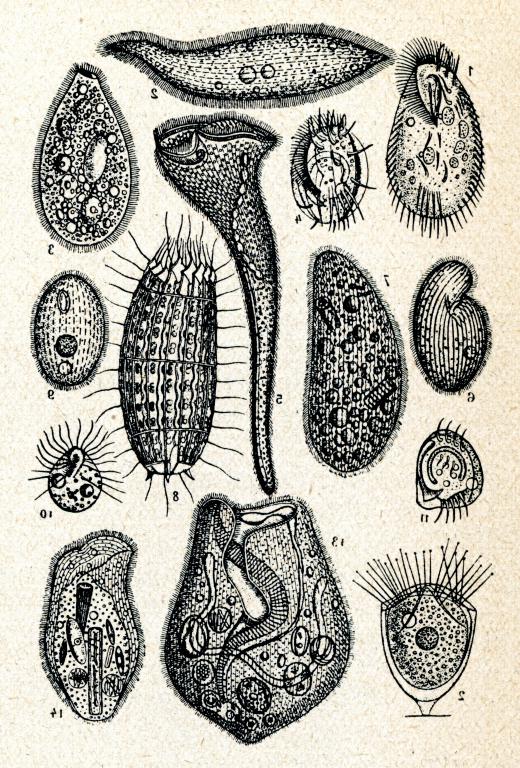What is Unique About Dinoflagellates?
Dinoflagellates are a large group of single-celled organisms belonging to the kingdom Protista. The vast majority of dinoflagellates are marine plankton. Other dinoflagellates live in bodies of fresh water such as lakes and ponds. Some live as parasites in marine invertebrates such as jellyfish, coral, and even other protists.
As a group, dinoflagellates are diverse, with most being microscopic in size and at least one variety, the Noctiluca, approaching a relatively enormous diameter of 2 millimeters.

Dinoflagellates locomote by means of two flagella: the longitudinal flagellum, which points toward the rear, and the transverse flagellum, which curves around the body of the organism. The two flagella function separately, the former acting mainly as a rudder, and the latter as the propeller.
Some dinoflagellates are bioluminescent, which means they are capable of producing their own light. This phenomenon occurs as a result of a chemical reaction that takes place within the organism, involving the compounds luciferin and luciferase. The effect is not unlike the light produced by a firefly. Due to this ability to glow, dinoflagellates are also sometimes referred to as pyrrophyta, or “fire plants.” One example of the bioluminescent variety of dinoflagellates is the Noctiluca, whose name means “night light.”

Although some dinoflagellates are parasitic, many are capable of photosynthesizing their own food via chloroplasts. In turn, dinoflagellates comprise an important source of food for other marine animals. In some cases, the relationship between the dinoflagellates and their host organism is symbiotic. In these symbiotic relationships, the host incorporates the dinoflagellates into itself without damage to either organism, and they both benefit from the nutrients they receive from each other. There are some species of coral reefs whose structures are largely dependent on the dinoflagellates disbursed within them.

En masse, dinoflagellates are capable of producing quantities of potent toxins, which can have serious, occasionally fatal, neurological and other consequences if consumed by humans. Human consumption generally does not occur directly, but as a result of eating shellfish or other seafood contaminated by the toxins.
Seasonally warm coastal waters annually encourage an efflorescence of dinoflagellates, which can discolor the water as the organisms proliferate. This is known as a “red tide.” Depending on the species of dinoflagellate, a red tide may be extremely hazardous to local shellfish and other marine life. This is due to the high levels of toxins produced by the masses of dinoflagellates. Humans who consume contaminated shellfish and seafood run the risk of contracting illnesses such as paralytic shellfish poisoning or ciguatera. For this reason, conventional wisdom says that shellfish should be eaten only in months with an R in them—that is, cooler months.
AS FEATURED ON:
AS FEATURED ON:













Discuss this Article
Post your comments